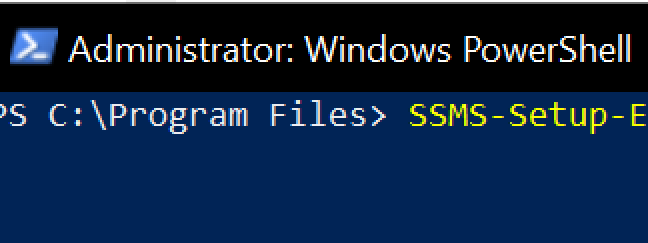
If you’ve installed SQL Server Management Studio (SSMS) recently, chances are that you’ve noticed that Azure Data Studio (ADS) was installed too. Since SSMS Version 18.7, ADS gets installed alongside with SSMS by default. But you might not be familiar with ADS. What is it and how does it set apart from SSMS? And how to install SSMS alone?
Introduction
ADS is a free, open source and cross-platform SQL code editor with built-in IntelliSense that is also able to manage SQL Server in Azure, so just this description alone sets it quite apart from SSMS. And yes indeed, it is cross platform which means you can use it on Mac OS and on Linux.
Features that SSMS does not have
ADS boasts some features that SSMS doesn’t have. Most important examples are:
Extensions ecosystem similar to that one like Visual Studio Code Source control for git out of the box Jupyter Notebooks for SQL, PowerShell, Python and more Dashboard for an excellent overview over your Instance Integrated terminal Excellent in connecting to Azure Dark mode ADS is builds upon the same system as Visual Studio Code (VSCode). Don’t mix it up with Visual Studio – VSCode is an very extensible and powerful editor whereas Visual Studio is a fully fledged IDE. However, if you want, you can use extensions to make VSCode to a very powerful system that is close to an IDE or even meets it. If you’re familiar with VSCode, you’ll be able to adapt to ADS very quickly.
So why still use SSMS?
Well in short, SSMS still has some capabilities that ADS does not have, especially for administering SQL Server Instance. However, for most if not all SQL developments, ADS can do the same as SSMS or even better. When it comes to administering SQL Server though, SSMS is still more powerful. For example, if you want to configure Always On Groups, using Maintenance Plans, PolyBase, or Replication, SSMS is still the winner. Microsoft says that ADS does not replace SSMS. In my opinion, perhaps it will one day, but for the foreseeable future, it certainly does not yet.
But can I avoid installing ADS when installing SSMS?
Firstly, I personally advise to install ADS as well in most DEV environments because it does have some very interesting and useful features. But to answer this question, if you’re installing it via graphical user interface, then you are unfortunately forced to install ADS, too. If you must avoid the installation of ADS, for example because you want to have a hardened PRD, you can avoid it if you install it via command line this way:
SSMS-Setup-ENU.exe /Passive DoNotInstallAzureDataStudio=1
If I uninstall SSMS, will ADS be uninstalled too? No. If you want to uninstall both, you’ll have to uninstall them separately.
This was a short introduction in this topic. If you have more questions, we will be happy to answer hem!